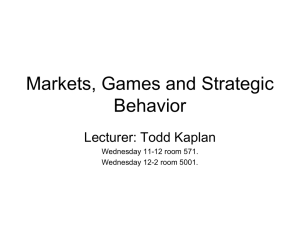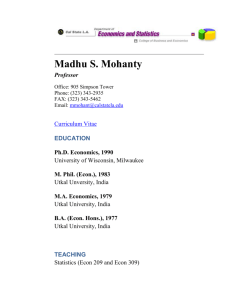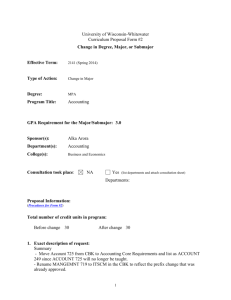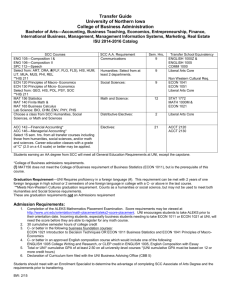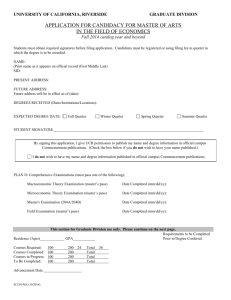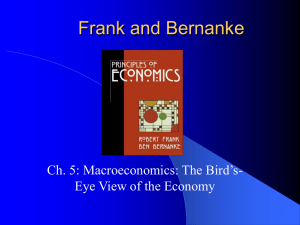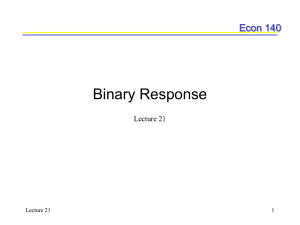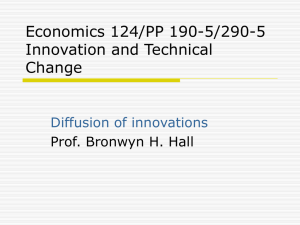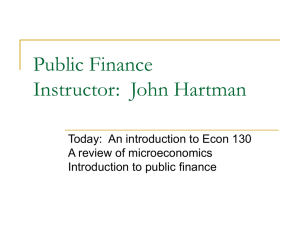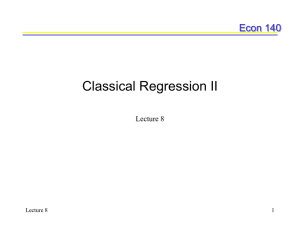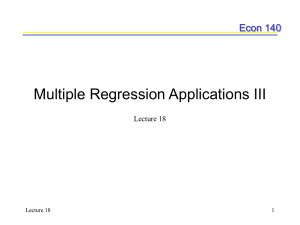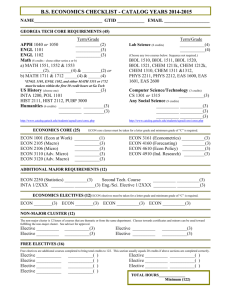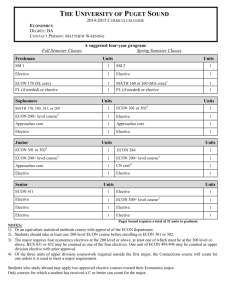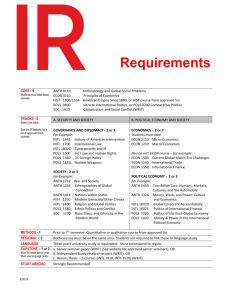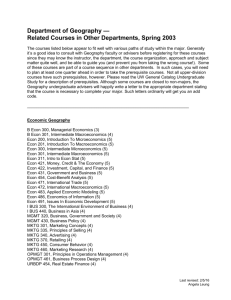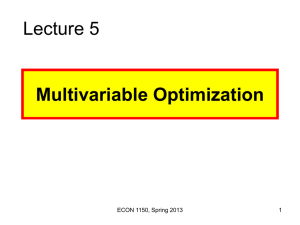Slide 1
advertisement
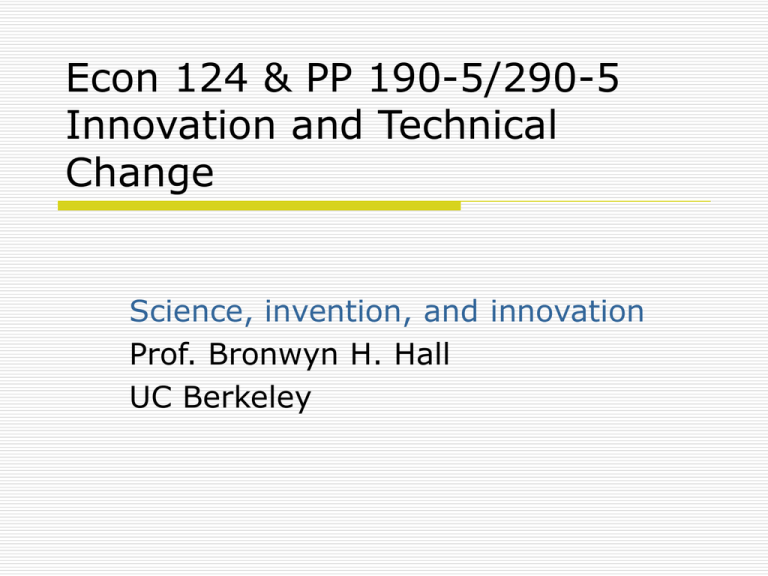
Econ 124 & PP 190-5/290-5 Innovation and Technical Change Science, invention, and innovation Prof. Bronwyn H. Hall UC Berkeley Part 2 of the course I. Innovation fundamentals A. Science, invention, and innovation (Fagerberg 2004 for an overview) B. Diffusion, standards, and network externalities (after the quiz - Hall 2004) II. IP system in practice A. The varieties of IP protection (Ch. 3) B. Some contemporary IP policy problems Fall 2004 (c) B H Hall Econ 124/PP 190-5/290-5 2 Further reading Nathan Rosenberg (Cambridge University Press paperbacks) Perspectives on Technology Inside the Black Box Joel Mokyr (Oxford University Press paperback) The Lever of Riches Fagerberg, Mowery, and Nelson (eds, Oxford University Press, forthcoming) Handbook of Innovation Fall 2004 (c) B H Hall Econ 124/PP 190-5/290-5 3 This week (21 and 23 Sept) Innovation fundamentals 1. Definitions 2. Determinants Level Direction 3. The process The linear model What the linear model leaves out Fall 2004 (c) B H Hall Econ 124/PP 190-5/290-5 4 Define three key concepts 1. Invention 2. Innovation 3. Diffusion ……..But recognize that the boundaries between these concepts are fuzzy Fall 2004 (c) B H Hall Econ 124/PP 190-5/290-5 5 Invention creation of an idea of how to do or make something (usually by an individual) “a prescription for a producible product or operable process so new as not to have been obvious to one skilled in the art at the time the idea was put forward" (Schmookler 1960) "an increment in the set of total technical knowledge of a given society" (Mokyr 1990) “the first occurrence of an idea for a new product or process” (Fagerberg 2004) Fall 2004 (c) B H Hall Econ 124/PP 190-5/290-5 6 Innovation making an idea for a new product or process real, putting it into practice usually performed by a team or company (requires financial resources as well as a range of skills) “the act of being the first to produce a new good or service or the first to use a new method or input” (Schmookler 1966) “the first commercialization of an idea” (Fagerberg 2004) “A new idea, method, or device. The act of creating a new product or process. Includes invention as well as the work required to bring an idea or concept into final form” (McNealy, Sun website, 2004) Fall 2004 (c) B H Hall Econ 124/PP 190-5/290-5 7 Diffusion the spread of a new product or process throughout society or at least throughout the relevant part of society the process that enables an innovation to contribute to economic growth and welfare NB: Some researchers refer to any adopter of a new technology as an “innovator.” In this course we will not use this wording. Fall 2004 (c) B H Hall Econ 124/PP 190-5/290-5 8 Determinants of innovation Economic factors (supply and demand) are important for an understanding of the rate and direction of technical change As in the case of ordinary goods like milk or shoes Understanding these helps in designing policy levers Chance and unpredictability can be important in the process There are forward and backward feedbacks throughout the process of innovation Fall 2004 (c) B H Hall Econ 124/PP 190-5/290-5 9 Innovation supply Supply of an innovation determined by state of the relevant scientific and technological knowledge (technological opportunity) cost and availability of inputs to innovation (trained technicians, knowledge workers, appropriate equipment) ability to capture the increased profit from innovation (appropriability) Fall 2004 (c) B H Hall Econ 124/PP 190-5/290-5 10 Innovation demand Demand for a potential innovation depends on Amount of cost reduction from that innovation (process innovation; new sources of supply; organizational change) Consumer or producer benefit from something new (product innovation) Consumer or producer benefit from improvement in an existing good (incremental product innovation) Fall 2004 (c) B H Hall Econ 124/PP 190-5/290-5 11 Direction of innovation - supply Lack of technological opportunity Science/technology not always available Leonardo da Vinci’s airplane Research on nanotechnology in 1910s, but lack of instrumentation – waited for electron microscope to make progress Many wants unsatisfied for an extended period of time cure for AIDS Malaria vaccine lightweight electric batteries Fall 2004 (c) B H Hall Econ 124/PP 190-5/290-5 12 Direction of innovation - supply Treatment of diabetes held up by complexity of understanding insulin needed crystallography to understand complex organic molecules Historically, mechanics & metals progressed faster because inorganic chemistry simpler Appropriability considerations Lack of patents directs invention towards secrecy (Moser) Fall 2004 (c) B H Hall Econ 124/PP 190-5/290-5 13 Direction of innovation - demand “Inducement mechanisms and focusing devices” (Rosenberg) Importance of bottlenecks in choice of innovative activity - “compulsive sequences,” where there is an imperative need for improvement Manufacturing feeds back to innovation Shocks to relative prices of inputs Fall 2004 (c) B H Hall Econ 124/PP 190-5/290-5 14 Examples of imbalance Oil tube drill for the inside of bicycle hubs because outside forming tool too fast for conventional drill, so manufacturing sequence out of step Development of laptop computer Focus on cheaper, lighter color screens Lighter, longer-lived rechargeable batteries Fall 2004 (c) B H Hall Econ 124/PP 190-5/290-5 15 Relative factor prices Sharp changes in relative prices Focuses attention on particular costs firms cannot innovate in all directions at once Oil price shocks and fuel-efficient cars Threat or actual withdrawal of labor strikes in mid-19th C Britain lead to labor-saving machines source of supply Cotton to UK in U.S. Civil War (economizing on inputs) US dye industry developed to replace German in WW I Southeast Asian rubber during WW II – leads to creation of synthetic rubber Fall 2004 (c) B H Hall Econ 124/PP 190-5/290-5 16
